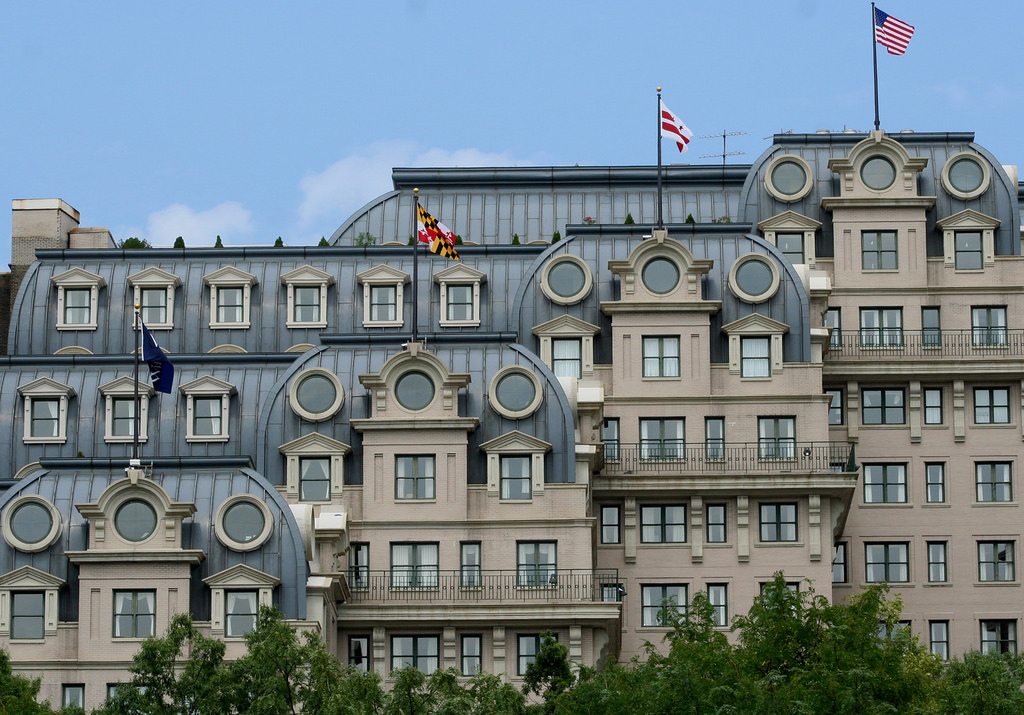Now that you’ve learned why place marketers should use Blue Ocean Strategy, how can destinations put this into practice and demonstrate value? As the last article explored, most business leaders understand the two common business strategies framed by economist Michael Porter, which demand a choice between creating a high-value product and striving for low-cost implementation. However, Kim and Mauborgne’s Blue Ocean Strategy rejects this choice and provides tools to generate value through a model that includes raising value and lowering cost simultaneously. In this model, a blue ocean is an uncontested market place created by changing the rules of the game. This helps businesses and organizations escape the lethal environment of a crowded red ocean where competitors can easily imitate each other and drive themselves out of business.
Fortunately, the tourism world is full of organizations who are putting Blue Ocean Strategy into practice. Let’s consider hotels. Some smart hoteliers in Linz, Austria created a new market with a think-outside-the-box project called Pixel Hotel. Instead of using one building to hold many hotel rooms, each room (or pixel) is in a different location in the city. This increases value by providing unique guest experiences while avoiding the cost of maintaining a large building. The grätzlhotel in Vienna, Austria is a similar concept created by the Urbanauts Hospitality Group. This horizontal hotel, or street loft, incorporates the whole neighbourhood. Travellers get a room in a funky area where breakfast is served in the charming restaurant down the road, the hotel spa is a Turkish bath only a few blocks away and guest laundry is washed and folded by the neighbour next door. In the grätzlhotel, the lobby is the city itself. This makes a much more immersive experience for a far lower price than a traditional hotel.
Another hotel trend with slightly, er, naughtier connotations is the rise in “afternoon delight” hotel bookings. The French booking website dayuse.com offers guests midday hotel rooms from Sao Paolo to Singapore (and Paris, of course), complete with all the crisp sheets, trouser presses and tea kettles that overnight guests would expect. Another example is roomertravel.com – an eBay-like service that sells hotel rooms that have already been booked. And don’t forget about glamping.com, which combines luxury hotel service with the great outdoors.
Beyond hotels, the greatest disruption is happening within the travel supply chain. Consider the well-known innovations around accommodation (Airbnb), taxis (Uber), trains (BlaBlaCar), or air travel with Southwest Airlines. This airline turned its business model into a blue ocean by ignoring the standard offerings of their industry (e.g., letting passengers reserve specific seats) and offering flexibility of bus travel at the speed of air travel by using secondary airports. These are all examples of how the combination of product differentiation (adding something) and lower cost (eliminating something) produce new markets.
These destinations are creating value with Blue Ocean Strategy
By zooming out to look at markets at a larger scale than a single operator’s business, Blue Ocean Strategy also shows potential to create long-lasting brand equity for a whole destination. States like Florida and Louisiana; nations like Malaysia, Paraguay and Chile; and European cities like Palermo (Italy), Leiria (Portugal) and Almere (the Netherlands) have adopted the Blue Ocean program as a canvas for their strategic plans. Critics of this way of thinking will argue that Kim and Mauborgne take the marketing of a value innovation for granted by assuming that marketing success will come inevitably. But what if those naysayers thought about it the other way around: What are your endless sales and promotional efforts worth if your starting point – your brand identity – does not provide any value?
Destination Think has a full range of services and unmatched international expertise to support the development and implementation of your strategic plan. Contact us to find out how we can help you differentiate your destination and create demand where it counts.
Let’s end with a cute example of a destination that has created its own valuable market space with a Blue Ocean Strategy. As a small city in the northwest of Belgium, Ghent is known for its medieval history, canal-side architecture, and historic museums and churches (including the famous Ghent Altarpiece). It’s a vibrant city with a relaxed vibe and has much of the historic charm that Bruges offers, but there’s one problem: well-known Bruges is just around the corner. Positioning itself around heritage, water, art or history doesn’t make Ghent unique enough to stand out in the crowd of art-filled cities that surround it. However, in 2009 Ghent found its mark by becoming the first city in the world to adopt a weekly vegetarian day. The local government recognized the health and environmental benefits of a vegetarian diet and mandated that all Ghent restaurants offer at least one vegetarian menu item. Ghent started to become known as the vegetarian capital of the world. The rest is history: by fulfilling that promise, Ghent became a magnet for travellers that fit their young, edgy DNA. These visitors may not be the biggest spenders, perhaps, but they are certainly the biggest online influencers and storytellers, coming from a passionate community that is used to sharing tips about places to go and stay. And of course, vegans and pesco-vegetarians will still blog about the culture, arts and heritage they find during their visit. This success has turned Ghent into one of Belgium’s most booming destinations. A value proposition that put food in the mouths of Europe’s vegetarians became word-of-mouth marketing for the whole city.
Archimedes famously said, “Give me a place to stand and a lever long enough and I will move the world.” A Blue Ocean Strategy could be that long lever for every place that seeks to build brand equity by demonstrating value to visitors. What are you waiting for?
Related reading: Learn how Place DNA®can help uncover your destination’s unique identity.
Featured image Credit: David, Flickr









Hello Frank. I love the document, it is well researched, brings a smile to my face as a Blue Ocean Strategist.
Thank you. Yes, I use BOS a lot to open people’s eyes.